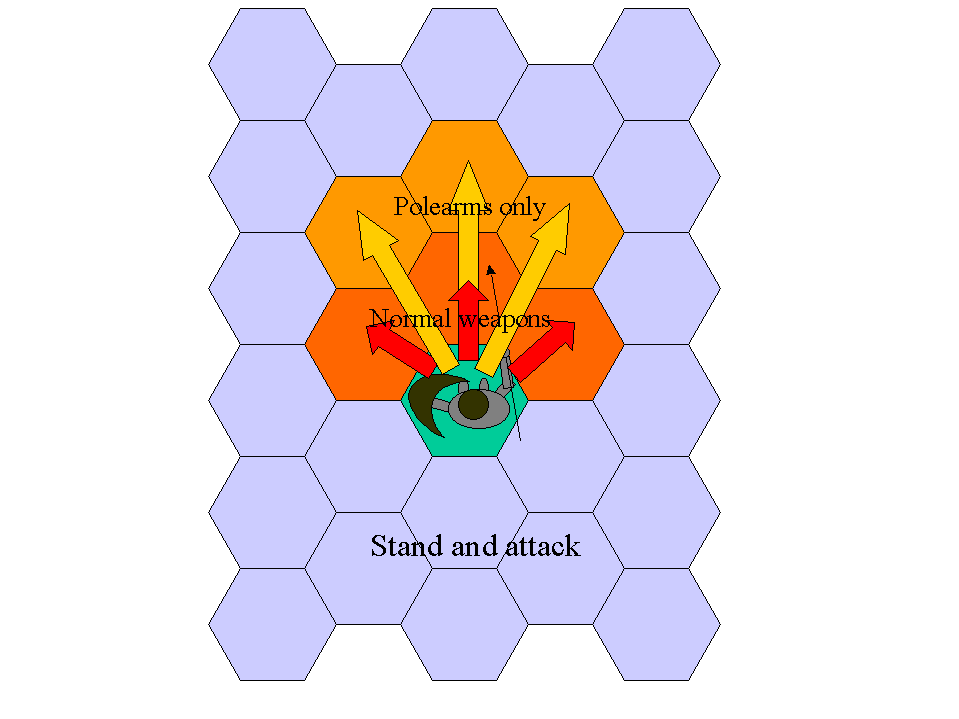
The most basic attack action is the stand and attack action. A phasing character can use this action to attempt to strike a target with a melee weapon. The phasing character does not move on the combat "board", but can optionally turn 60 degrees before making the attack. If striking with a normal melee weapon, the target must be in one of the three adjacent hexes in front of the character. If striking with a polearm, the target may be in one of the three hexes immediately beyond that (see diagram below).

Once any reactions to the attack have been declared, dice rolls are made to determine whether the attack hits the target.
As a reaction: A non-phasing character can carry out a stand and attack as a reaction to an opponent moving into one of the target hexes, for example as a result of a move, jump back, side-step or parry action/reaction. This represents the character being set and waiting for the opponent. The character cannot carry out a stand and attack as a reaction if the opponent was already adjacent to the character at the start of the opponent's action/reaction.
If a non-phasing character declares a stand and attack reaction to an opponent's attack (i.e. if they advance and attack him/her), both characters carry out their attack dice rolls but no defence dice rolls are made (and hence no defensive reactions help); the character with the higher attack dice roll result strikes the opponent and the other character misses - if both attack dice roll results are equal, both attacks hit their targets simultaneously.
For example, Cogan advances and attacks Urlik with a hand-&-half sword. Urlik declares an attack reaction as Cogan approaches, swinging his axe at him. Cogan's dice roll result is 10, Urlik's is 8. Cogan's blow hits home before Urlik can complete his swing.
As a follow-on: If a character successfully side-steps an incoming attack, he/she can carry out a stand and attack action as a follow-on to the successful side-step. The opponent may use the original attacking weapon (or any other ready weapon) to block or parry this follow-on attack.
If a character successfully blocks an incoming attack, his/her blocking weapon will be temporarily locked with the opponent's attacking weapon. The blocking character can exploit this situation if he/she has a second weapon ready (i.e. other than the one used for the block). In this case, he/she can carry out a stand and attack action (using the second weapon) as a follow-on to the successful block. This represents attacking while the blocking weapon and the opponent's weapon are locked. The opponent may not use the original attacking weapon to block or parry this follow-on attack (since it is still locked with the blocking weapon).
For example, Cogan is attacking Urlik with a hand-&-half sword. Urlik blocks Cogan's attack with his large shield; while Cogan's hand-&-half and Urlik's shield are locked, Urlik follows up with an attack with the axe he has in his other hand. Cogan cannot use his hand-&-half sword to block or parry this attack, so declares a jump back dodge instead.
Action point cost: The number of action points that a stand and attack action, reaction or follow-on uses depends on the weapon attack mode used; it varies between two and four action points.
A mounted character will normally attack using a stand and attack action/reaction, but the hexes into which he/she can strike are different.